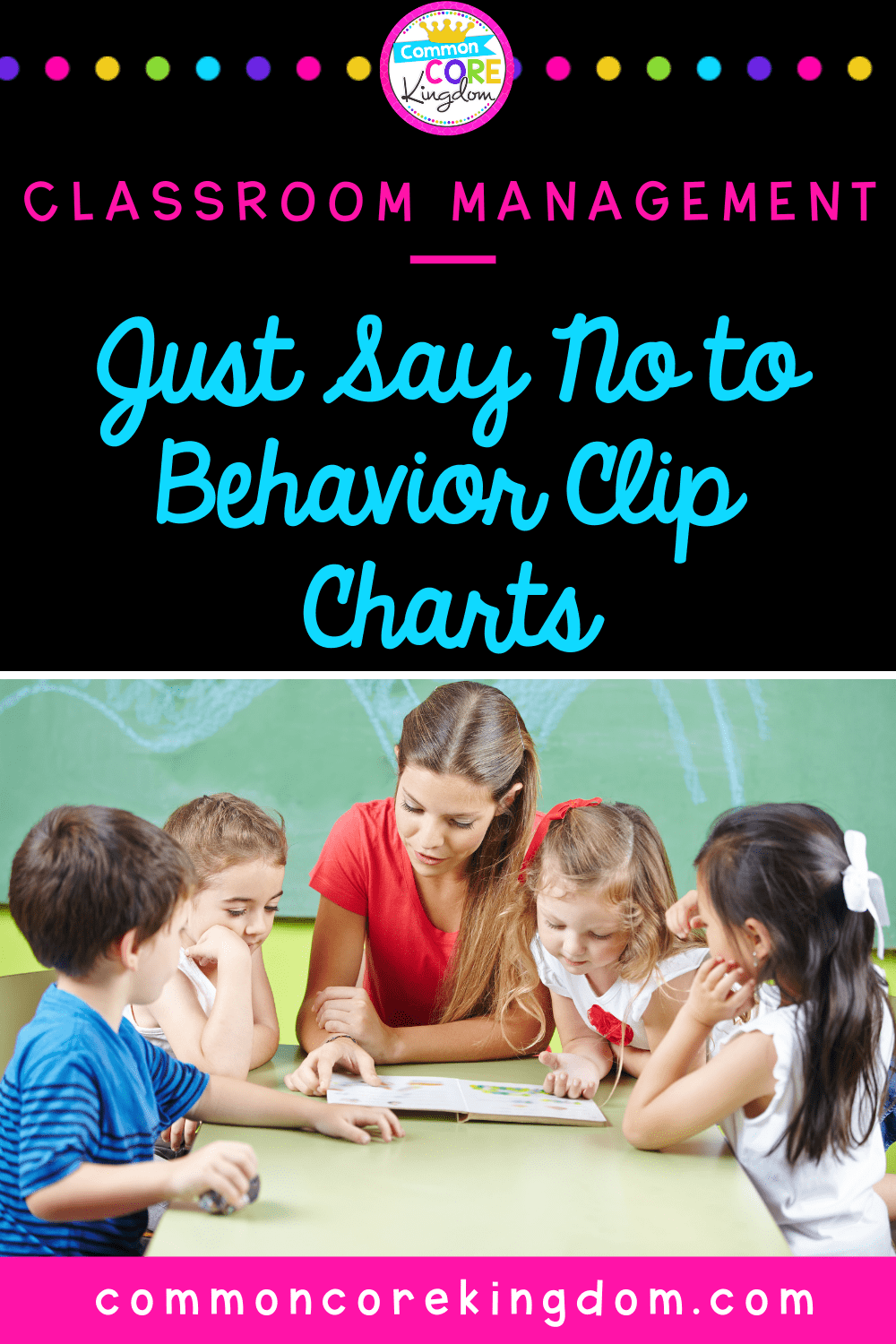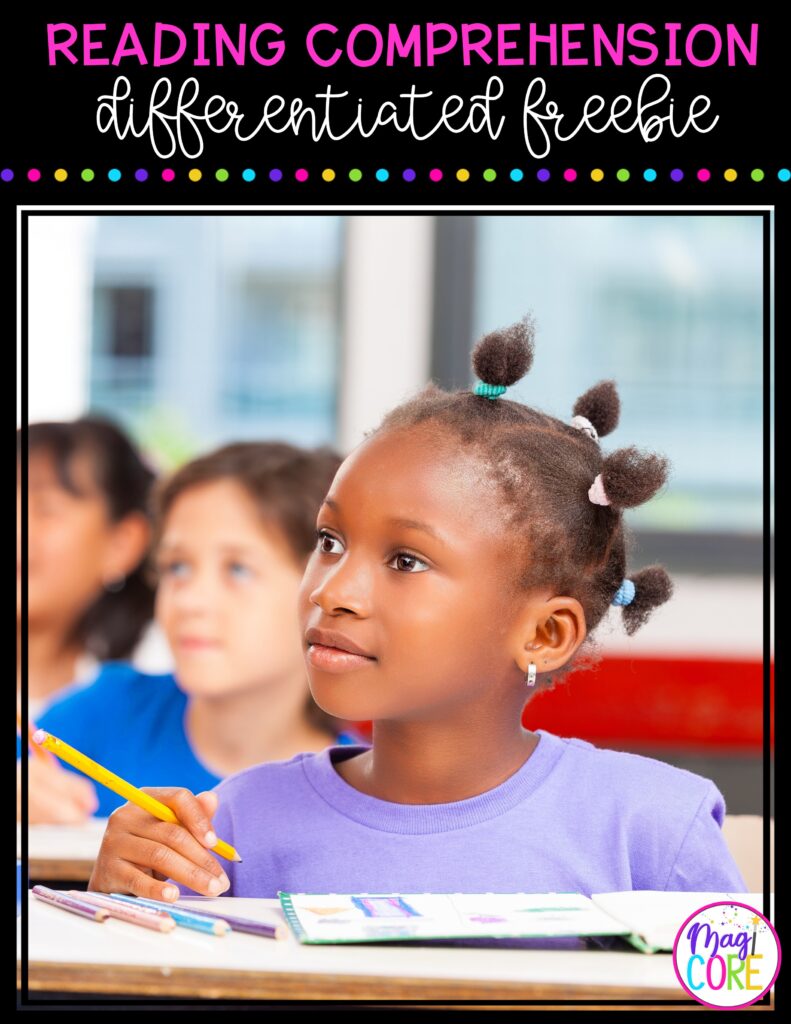Behavior clip charts have been a staple in many classrooms as the primary behavior management tool for years. In my early days as a substitute teacher, I remember how helpful behavior charts were for me to manage behaviors as a guest teacher. However, early in my teaching career, I learned how harmful it is to use behavior clip charts. In this post, I talk about the reasons why behavior clip charts are not the best practice. I also share effective alternatives that will help your students thrive. So, if you’re struggling with managing student behavior or still using a behavior clip chart, this post is for you!
Clip charts are a very simple routine for novice teachers to implement. Teachers print out the colors of a stop sign and write student names on clips. Typically, students start the day or week on the color green. Every time a child does something “wrong” or breaks a rule, the teacher corrects the student and tells them to move their clip down a color. If students do something “good” to redeem themselves, they move their clip back up.
On the surface, this seems like a reasonable practice. The purpose of clip charts are to hold students accountable for their choices. They are also a visual way for students to “see” a consequence. Clip charts are designed to deter kids from making “bad choices” for fear of moving their clip. The primary repercussion is humiliation in front of the class or disappointing the teacher. This is where behavior clip charts create more harm than good. For some kids who are eager to please, behavior clip charts may “work” by resulting in better behavior; however, it doesn’t foster good behaviors for the right reasons.
Ultimately, behavior clip charts may deter small infractions from the people-pleasers in your class, but they also reinforce the concept that they should make choices based solely on recognition, or not do things for fear of being “caught.”
The most concerning thing about behavior clip charts is the fact that they reinforce labeling theory. If you walk into any classroom on multiple days of the week throughout the year, you will typically see the same kids on “red” and the same kids on “green.” Labeling is a real issue, and whether we recognize it or not, it’s already prevalent in our schools and society. Labeling occurs whenever we identify a particular student with certain behaviors in a manner that shows the student we expect those behaviors from them. We do not need another tool that visually labels students as “bad” and “good” for all to see. The reality is that labeling the same students as “bad” over and over can only contribute to their poor behavior. No child changes their behavior long-term because of a clip chart.
When you use behavior clip charts, kids who display “good” behaviors are making choices based on extrinsic motivation. Extrinsic motivation is reward-driven behavior. Under this structure, students display good behaviors to be “caught” so that they receive recognition. Recognition for positive behavior is not always bad; however, when we engrain rewards as the purpose for students making decisions, students become reward-motivated and entitled. Instead, we should be working to build intrinsic motivation and teach students to want to make choices for the good of themselves and those around them.
Not only do behavior charts cause students to be labeled, but they also use public humiliation to coax kids into behaving. I was not the type of teacher who whispered every redirection in a child’s ear for fear of embarrassment, but I don’t believe publicly labeling and humiliation is the best way to motivate and inspire children.
This is a bit of a trick question. The good news is that those time-consuming and money-consuming reward systems are unnecessary. The bad news is that – well – teaching is hard work. I don’t believe there is an effective one-size-fits-all tool that will solve all of your behavior management troubles. Behavior management efforts should be focused on developing relationships with your students and meeting all of their needs.
Here is what you should focus on:
Having personal relationships with all students, particularly those that display challenging behaviors, will have the greatest impact.
Create a classroom community and a positive culture. If you grow a classroom culture where everyone accepts and supports each other, no matter their challenges, students will care. Create a culture where it is not only okay to make mistakes but also celebrated when mistakes are made and we grow from them. This isn’t an easy feat and will take all year to grow and maintain. You will continue to have students with challenges. But students with challenges know they have an accepting place to grow and learn.
This will take A LOT of planning, strategies, and discussions, but a good place to start is with Morning Meetings.
Have tools in place for students to cope with all emotions. Allow time for students to share excitement or happy news. Provide a place for students to have space and cool down if they are tired, overwhelmed, or angry. Give students time to get their energy out, socialize, and work together.
Create interventions and safety nets for individual students. There is not a one-size-fits-all key to behavior management. Individualize and give students the tools and support they need. If you have a student who needs to track their behavior progress, use an individual behavior chart or more of the tools in my Behavior Tracking resource. If you have a student who is a perfectionist, work with both them and their family to normalize expectations.
Build intrinsic motivation. Have discussions with your students about why we make choices. While we all have external motivations, it is also important to look at doing things for our own best interest, as well as the greater good of everyone around us. We shouldn’t do things to “get” something, but to help ourselves or others.
Hold students accountable. Even if you do not have a behavior chart, you can and should hold students accountable for their actions. I am a firm believer that consequences should be related to the action. For example, if a student is talking too much to complete their work, they should complete their work in a more secluded place where they can focus.
As I mentioned above, teaching is hard work – and that goes for behavior management, too. But if you put in the work, you will reap the rewards of a healthy, balanced, and accountable classroom.
I hope these tips help you find your own behavior path in your classroom!
If you’re a new teacher or if you just can’t seem to get a successful system of rituals and routines in place, and you’re ready to give your students the the stable learning environment you know they deserve, then check out my Classroom Management Course. Together, we’ll build a strategy for success that you can use year after year. Your students will thrive. And you can reduce your stress and finally earn the respect you deserve.

We strive to create resources that empower teachers and transform student success. We create skill-focused resources that promote critical thinking, enhance student engagement, and incorporate diversity. Our goal is to develop the tools teachers need to reach their students and foster a lifetime of learning.

